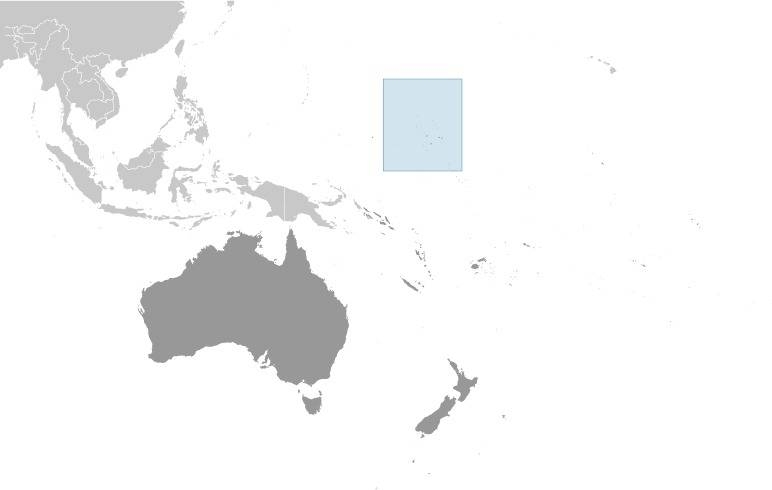Country Summary




Introduction
Background
After almost four decades under US administration as the easternmost part of the UN Trust Territory of the Pacific Islands, the Marshall Islands attained independence in 1986 under a Compact of Free Association. Kwajalein hosts one of four dedicated ground antennas that assist in the operation of the Global Positioning System (GPS) navigation system.
Geography
Area
total: 181 sq km
land: 181 sq km
water: 0 sq km
Climate
tropical; hot and humid; wet season May to November; islands border typhoon belt
Natural resources
coconut products, marine products, deep seabed minerals
People and Society
Population
79,906 (2022 est.)
Ethnic groups
Marshallese 92.1%, mixed Marshallese 5.9%, other 2% (2006 est.)
Languages
Marshallese (official) 98.2%, other languages 1.8% (1999 est.)
Religions
Protestant 80.5% (United Church of Christ 47%, Assembly of God 16.2%, Bukot Nan Jesus 5.4%, Full Gospel 3.3%, Reformed Congressional Church 3%, Salvation Army 1.9%, Seventh Day Adventist 1.4%, Meram in Jesus 1.2%, other Protestant 1.1%), Roman Catholic 8.5%, Church of Jesus Christ 7%, Jehovah's Witness 1.7%, other 1.2%, none 1.1% (2011 est.)
Population growth rate
1.34% (2022 est.)
Government
Government type
mixed presidential-parliamentary system in free association with the US
Capital
name: Majuro; note - the capital is an atoll of 64 islands; governmental buildings are housed on three fused islands on the eastern side of the atoll: Djarrit, Uliga, and Delap
Executive branch
chief of state: President David KABUA (since 13 January 2020); note - the president is both chief of state and head of government
head of government: President David KABUA (since 13 January 2020)
Legislative branch
description: unicameral National Parliament consists of:
Nitijela (33 seats; members in 19 single- and 5 multi-seat constituencies directly elected by simple majority vote to serve 4-year terms); note - the Council of Iroij, a 12-member group of tribal leaders advises the Presidential Cabinet and reviews legislation affecting customary law or any traditional practice); members appointed to serve 1-year terms
Economy
Economic overview
upper middle-income Pacific island economy; US aid reliance; large public sector workforce; produces coconut oil as a substitute to diesel fuel; becoming offshore banking locale; fishing rights seller; import-dependent
Real GDP (purchasing power parity)
$240 million (2019 est.)
Real GDP per capita
$4,000 (2019 est.)
Agricultural products
coconuts
Industries
copra, tuna processing, tourism, craft items (from seashells, wood, and pearls)
Exports
$130 million (2018 est.)
Exports - partners
Poland 28%, Denmark 19%, South Korea 13%, Indonesia 10%, Cyprus 6% (2019)
Exports - commodities
ships, fish, recreational boats, broadcasting equipment, coal tar oil (2019)
Imports
$170 million (2018 est.)
Imports - partners
South Korea 39%, China 27%, Japan 15% (2019)
Imports - commodities
ships, refined petroleum, centrifuges, recreational boats, boat propellers (2019)
Page last updated: Tuesday, July 26, 2022
